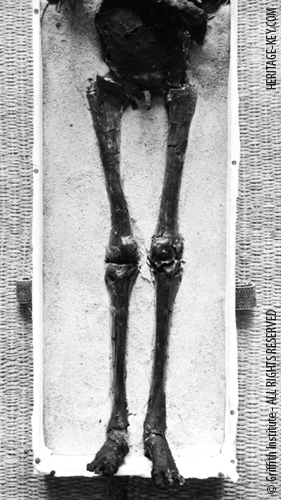 Tutankhamun’s penis was swapped because it was too small, according to a media report. New Scientist writer Jo Marchant believes the young pharaoh may have suffered from a rare genetic defect which, among other issues, causes under-developed genitalia. Antley-Bixler syndrome also results in elongated skulls, which could account for stylistic depictions of King Tut’s proposed father Akhenaten(read our recent article on how the boy-king could have died from sickle-cell disease here).
Tutankhamun’s penis was swapped because it was too small, according to a media report. New Scientist writer Jo Marchant believes the young pharaoh may have suffered from a rare genetic defect which, among other issues, causes under-developed genitalia. Antley-Bixler syndrome also results in elongated skulls, which could account for stylistic depictions of King Tut’s proposed father Akhenaten(read our recent article on how the boy-king could have died from sickle-cell disease here).
Marchant claims the modest penis was most probably broken off “during a particularly brutal autopsy“, yet others say it could easily have been damaged during its early years of display in the tomb (which you can see online right now), when security wasn’t overly tight. Marchant takes this arugment a step, or ten, further: could modern Egyptian experts have replaced the ancient king’s penis to save his blushes?
Dr Zahi Hawass, Egypt’s antiquities chief, rejects the theory, arguing that Tut’s penis is “well-developed”. Yet its provenance and whereabouts have been the subject of speculation for decades since Howard Carter and Lord Carnarvon discovered Tutankhamun’s tomb in 1922.
Photos of the boy-king’s mummy taken by Harry Burton upon his discovery clearly show the penis attached. Yet it was declared missing in 1968. Many proposed it had been stolen or destroyed, until a 2006 CT-scan rediscovered it, unattached in the sand around the pharaoh’s body.
Thus ensues one of archaeology’s oddest arguments, in which a writer and world-famous archaeologist debate the locker-room credentials of a 3,000-year-old Egyptian royal. Call me cynical but Ms Marchant is most probably living in the realm of fantasy with this conspiracy theory, and it’s not a fantasy I’d like to consider too much.